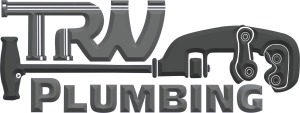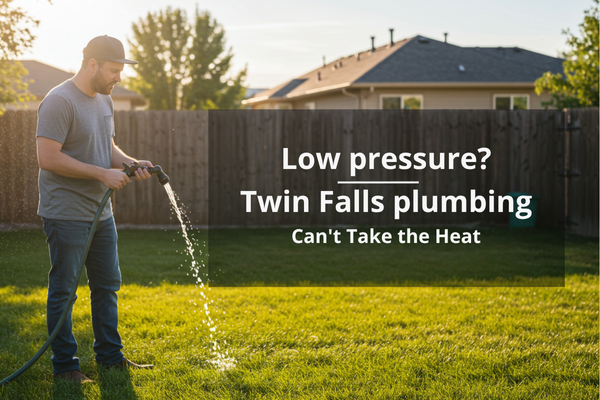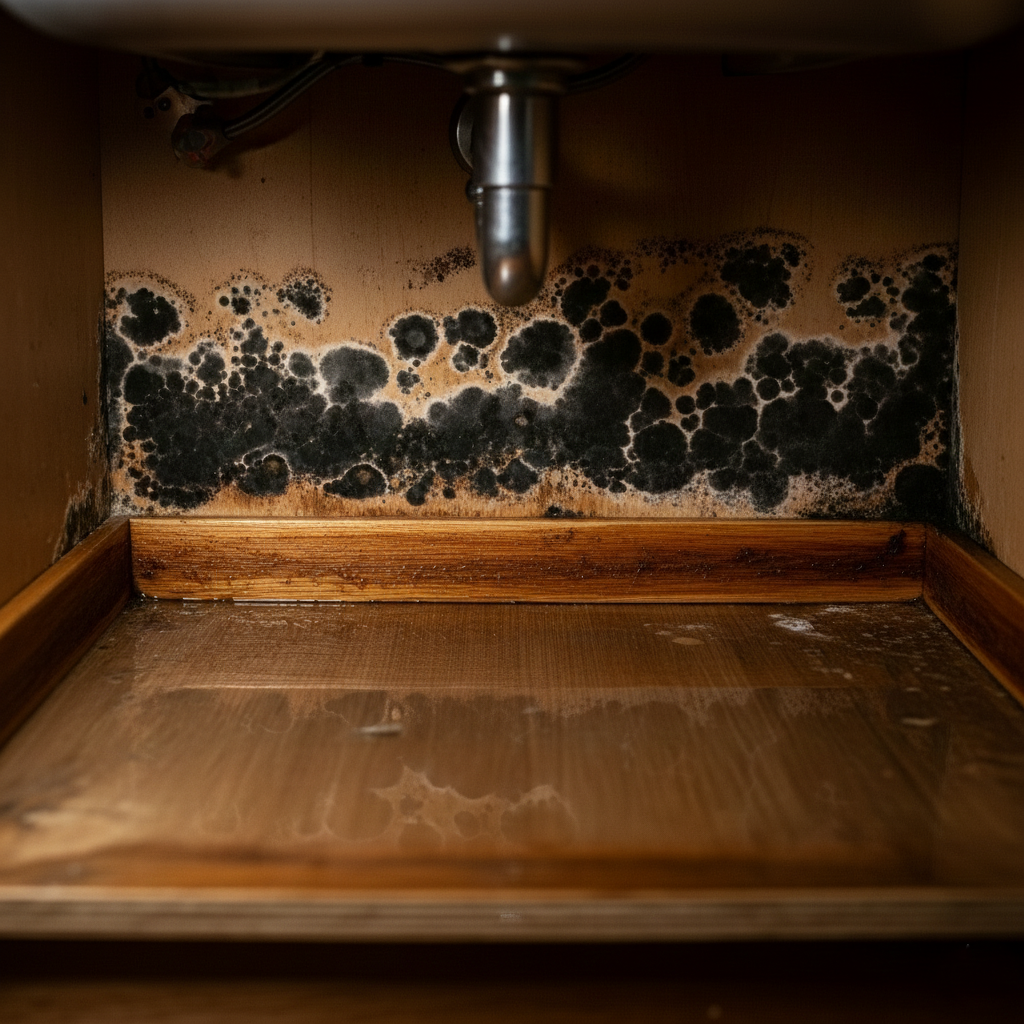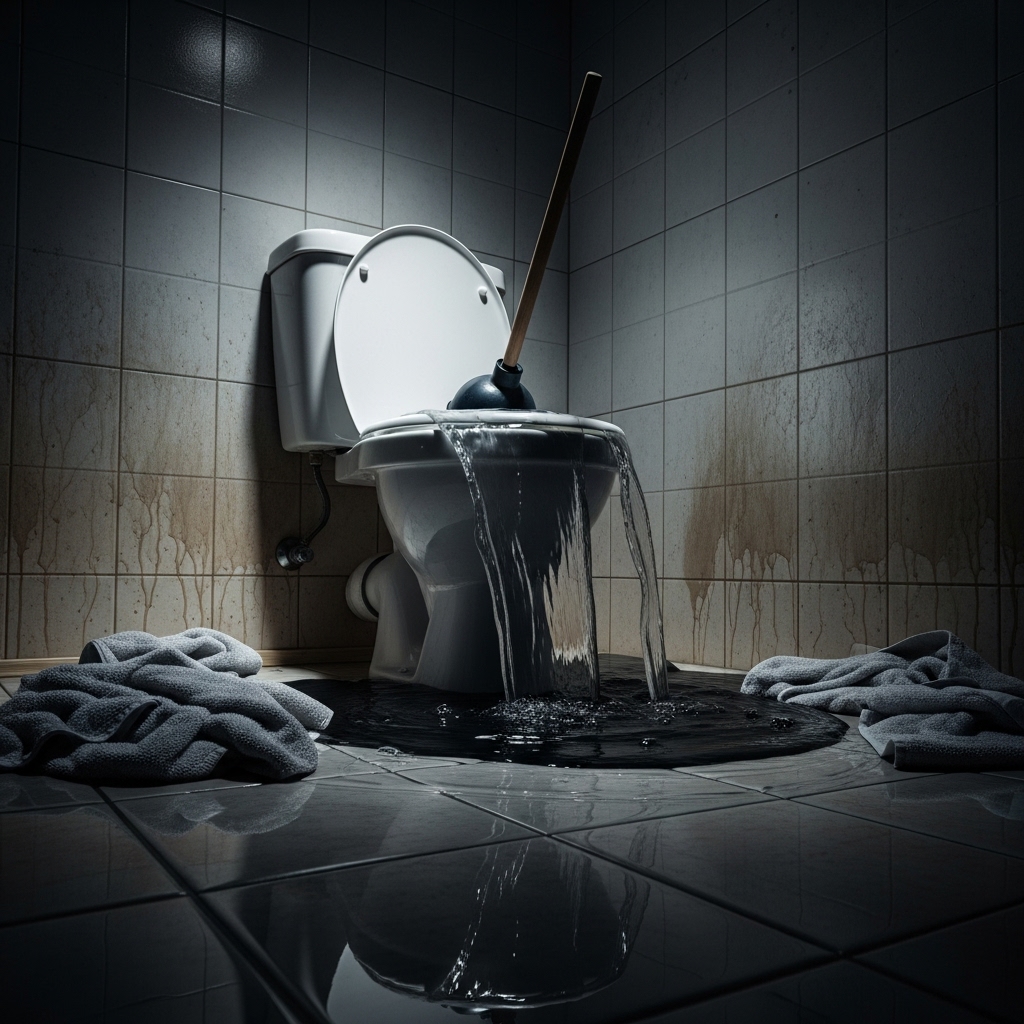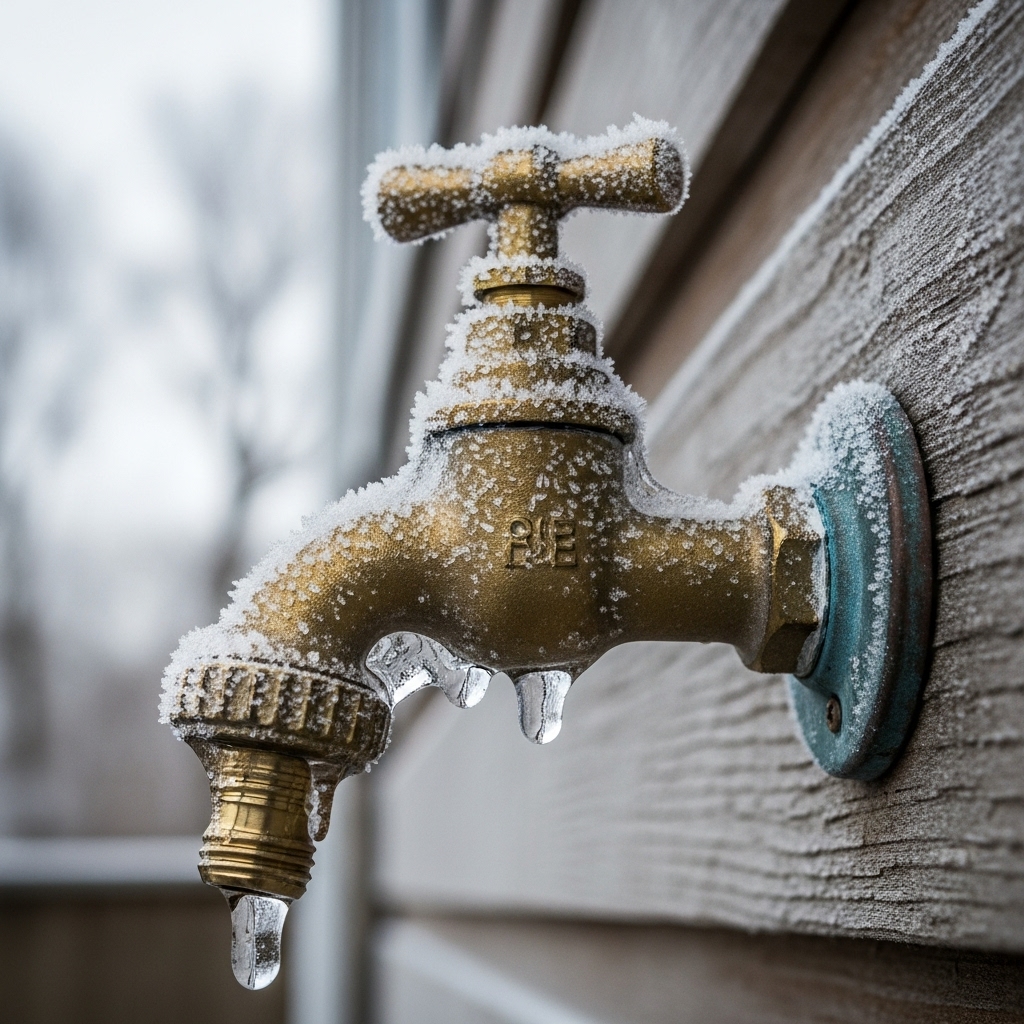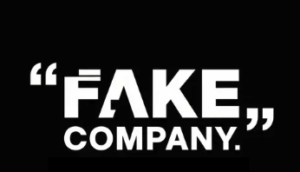Summer in the Magic Valley brings long days, outdoor activities, and unfortunately for many Twin Falls homeowners, a host of plumbing challenges. From mysteriously dropping water pressure to unexpected pipe bursts, the combination of increased usage and extreme heat creates the perfect storm for plumbing problems.
Understanding these seasonal issues—and knowing how to address them—can save you thousands in emergency repairs and water damage. This comprehensive guide covers everything Twin Falls homeowners need to know about summer plumbing challenges, backed by local insights and practical solutions.
Why Summer is Peak Season for Plumbing Problems
The Perfect Storm: Heat, Usage, and Infrastructure Strain
Summer plumbing issues aren’t coincidental—they’re the result of multiple factors converging during Idaho’s hottest months. Understanding these underlying causes helps homeowners identify problems early and take preventive action.
Increased Household Water Demand Summer water usage in Twin Falls typically increases by 40-60% compared to winter months. This surge comes from:
- Daily lawn irrigation (often accounting for 50-70% of summer water bills)
- Frequent showers and cooling activities
- Pool filling and maintenance
- Increased laundry from outdoor activities
- Garden and landscape watering
Municipal System Strain The City of Twin Falls water system, while robust, faces significant challenges during peak summer months. The system was designed for average usage, but summer demand can push it to capacity limits. Areas most affected include:
- Neighborhoods at higher elevations
- End-of-line locations on water mains
- Older residential areas with smaller distribution pipes
- New developments where infrastructure may still be settling
Temperature-Related Infrastructure Stress Idaho’s temperature swings—from cool nights to 100°F+ days—create expansion and contraction cycles that stress plumbing systems:
- Underground pipes expand and contract daily
- Above-ground fixtures experience thermal stress
- Soil movement affects pipe positioning and connections
- Aging infrastructure becomes more vulnerable to temperature fluctuations
The Most Common Summer Plumbing Issues in Twin Falls
1. Low Water Pressure: Beyond the Obvious
Low water pressure is Twin Falls homeowners’ most frequent summer complaint, but the causes are more complex than simple supply and demand.
City-Wide Pressure Drops Twin Falls typically maintains water pressure between 45-65 psi throughout the distribution system. During peak summer usage (6-9 AM and 6-9 PM), pressure can drop to 35-40 psi in some areas—still functional but noticeably different.
The city has implemented several strategies to manage this:
- Odd/even day watering restrictions during drought conditions
- Pressure monitoring stations throughout the distribution network
- Upgraded pumping capacity at key locations
- Public education campaigns about conservation
Property-Specific Pressure Issues When your neighbors have normal pressure but you don’t, the problem is likely on your property:
Pressure Regulator Failure Most Twin Falls homes built after 1980 have pressure regulators installed where the water line enters the property. These devices protect your plumbing from excessive city pressure but can fail after 10-15 years. Signs of failure include:
- Pressure that’s either too high (over 80 psi) or too low (under 40 psi)
- Fluctuating pressure throughout the day
- Water hammer (banging pipes) when fixtures are turned off
- Continuous slight hissing from the regulator
Pipe Corrosion and Mineral Buildup Twin Falls water is moderately hard (7-12 grains per gallon), which over time creates mineral deposits inside pipes. Homes built before 1980 with galvanized steel pipes are particularly susceptible. Symptoms include:
- Gradually decreasing pressure over months or years
- Discolored water when first turned on
- Reduced flow from multiple fixtures
- White or yellowish buildup on faucet aerators
Hidden Leaks Summer’s increased usage can reveal leaks that were previously undetectable. Underground leaks are particularly problematic because they:
- Reduce overall system pressure
- Waste significant amounts of water
- Can cause foundation settling or landscape damage
- Often go unnoticed until water bills spike dramatically
2. Sprinkler System Failures
Twin Falls’ clay-heavy soil presents unique challenges for irrigation systems, especially during hot, dry summers.
Pipe Shifting and Breaks The area’s expansive clay soil shrinks significantly during dry periods, causing:
- Sprinkler pipe joints to separate
- Rigid pipes to crack under soil movement
- Sprinkler heads to sink or become misaligned
- Control valve boxes to shift position
System Overload Many homeowners unknowingly overtax their sprinkler systems by:
- Running too many zones simultaneously
- Operating systems during peak demand hours
- Failing to adjust seasonal programming
- Neglecting regular maintenance and cleaning
3. Water Heater Stress and Failure
Summer puts unique demands on water heaters that many homeowners don’t consider.
Increased Usage Patterns While you might expect lower demand for hot water in summer, usage actually increases due to:
- More frequent showers (multiple family members cooling off)
- Increased laundry loads from outdoor activities
- Pool and spa heating
- Outdoor cleaning activities requiring heated water
Efficiency Drops in Extreme Heat Water heaters located in garages, basements, or utility rooms without adequate ventilation work harder when ambient temperatures rise. A water heater operating in a 110°F garage uses significantly more energy than one in a 70°F environment.
Thermal Expansion Issues As water heats and cools throughout the day, it expands and contracts. Without proper expansion tanks, this can cause:
- Pressure relief valve discharge
- Tank stress and premature failure
- Pipe joint stress and leaks
- Inconsistent water temperature
4. Sewer Line Problems
Summer’s combination of increased water usage and soil conditions creates perfect conditions for sewer line issues.
Root Intrusion Twin Falls’ mature trees and shrubs seek water aggressively during dry summers. Sewer lines, with their constant moisture, become targets for root growth. Common problem trees include:
- Cottonwoods and willows (extremely aggressive root systems)
- Elm trees (extensive shallow root networks)
- Fruit trees (particularly cherry and apple)
Signs of root intrusion include:
- Slow drains throughout the house
- Gurgling sounds from drains
- Sewage backup during heavy water usage
- Lush grass growth over sewer line paths
Pipe Settling and Separation Clay soil’s shrinking during dry periods can cause sewer pipes to settle unevenly, leading to:
- Joint separation and leaks
- Pipe sagging and improper drainage
- Increased risk of backups
- Long-term structural damage
Preventive Maintenance: Your Summer Plumbing Checklist
Monthly Tasks (June-August)
Water Pressure Monitoring
- Test pressure at multiple fixtures during different times of day
- Document any significant changes or patterns
- Check outdoor faucets and irrigation connections
- Monitor water bills for unusual increases
Visual Inspections
- Look for wet spots in yards (potential underground leaks)
- Check around water heater for signs of moisture or corrosion
- Inspect visible pipes for new mineral deposits or corrosion
- Examine sprinkler system for broken heads or misaligned coverage
System Maintenance
- Clean faucet aerators and showerheads monthly
- Test pressure relief valves on water heaters
- Clear debris from outdoor drains and sprinkler filters
- Check irrigation timers and adjust for seasonal needs
Seasonal Tasks (Early Summer)
Professional System Check Consider having a qualified plumber inspect:
- Pressure regulator function and calibration
- Water heater efficiency and safety systems
- Main water line for signs of wear or damage
- Sewer line condition (especially if you have large trees)
Irrigation System Startup
- Test all zones for proper operation
- Adjust sprinkler heads for optimal coverage
- Check and clean control valve boxes
- Verify timers are set for local watering restrictions
Water Quality Testing
- Test for hardness levels (affects appliance longevity)
- Check for iron or sulfur content (common in Twin Falls area)
- Consider whole-house filtration if quality issues exist
DIY Solutions vs. Professional Help: Making the Right Choice
Problems You Can Safely Handle
Low Pressure from Single Fixtures
- Cleaning aerators and showerheads
- Replacing worn washers and seals
- Adjusting water heater temperature settings
- Basic sprinkler head alignment and cleaning
Simple Maintenance Tasks
- Flushing water heaters (if you’re comfortable with the process)
- Cleaning drain traps and P-traps
- Replacing toilet flappers and fill valves
- Basic caulking around fixtures
When to Call Professionals
Pressure Regulator Issues Pressure regulators require precise calibration and often involve shutting off main water supplies. Incorrect installation can damage your entire plumbing system or violate local codes.
Underground Leaks Locating and repairing underground leaks requires specialized equipment and expertise. Attempting DIY repairs often causes more damage and can affect your property’s foundation.
Water Heater Problems Gas water heater repairs involve safety risks, while electric units require electrical expertise. Both types have specific venting and code requirements that vary by installation.
Sewer Line Issues Sewer line repairs often require permits, specialized equipment, and knowledge of local health department regulations. Improper repairs can create health hazards and legal liabilities.
Understanding Twin Falls Water Quality and Its Impact
Local Water Characteristics
Twin Falls receives its water primarily from the Snake River Plain Aquifer, one of the world’s most productive aquifer systems. However, this water source has specific characteristics that affect plumbing:
Hardness Levels Local water averages 8-11 grains per gallon of hardness, primarily from dissolved calcium and magnesium. This level is considered “moderately hard” and will cause mineral buildup over time without proper treatment.
Seasonal Variations Water quality can vary throughout the year:
- Spring: Higher sediment levels from snowmelt and runoff
- Summer: Concentrated minerals as usage increases
- Fall: Generally the most stable period for water quality
- Winter: Lowest usage, most consistent pressure and quality
Treatment Implications Understanding your water quality helps in making informed decisions about:
- Water softening systems (recommended for most Twin Falls homes)
- Filtration needs for taste and odor improvement
- Appliance protection strategies
- Landscaping and irrigation considerations
Emergency Preparedness: What to Do When Problems Strike
Immediate Response Steps
Water Pressure Loss
- Check if the problem affects multiple fixtures or just one
- Contact neighbors to determine if it’s area-wide
- Check your main shutoff valve position
- Document the time and severity for future reference
Visible Leaks
- Shut off water to the affected area immediately
- Move valuable items away from the leak area
- Take photos for insurance documentation
- Contact your plumber and insurance company if damage is significant
Sewer Backup
- Stop using all water fixtures immediately
- Avoid contact with sewage water
- Ventilate the area if backup is indoors
- Contact emergency plumbing services immediately
Building Relationships with Local Professionals
Choosing the Right Plumber Look for plumbers who:
- Are licensed in Idaho and familiar with local codes
- Have experience with Twin Falls’ specific soil and water conditions
- Offer emergency services during peak summer months
- Provide upfront pricing and warranty their work
- Have strong local references and established reputation
Water Treatment Specialists Consider consulting with local water treatment professionals about:
- Whole-house filtration systems
- Water softening solutions appropriate for local conditions
- Irrigation water treatment options
- Regular maintenance programs
Long-Term Solutions and Upgrades
Infrastructure Improvements
Pipe Replacement Planning If your home was built before 1980, consider:
- Gradual replacement of galvanized pipes with copper or PEX
- Upgrading main water lines for improved pressure
- Installing emergency shutoff valves in strategic locations
- Adding whole-house pressure regulation systems
Water Heater Upgrades Modern water heaters offer significant advantages:
- Tankless systems for unlimited hot water and space savings
- High-efficiency models that reduce operating costs
- Smart controls for optimal performance and monitoring
- Properly sized systems for your actual usage patterns
Irrigation System Improvements Consider upgrading to:
- Smart irrigation controllers that adjust for weather conditions
- Drip irrigation for gardens and landscaping
- High-efficiency sprinkler heads and nozzles
- Separate irrigation meters to track outdoor usage
Cost-Benefit Analysis of Improvements
Return on Investment Many plumbing improvements pay for themselves through:
- Reduced water bills (especially important with tiered pricing)
- Lower energy costs from efficient appliances
- Prevented emergency repairs and water damage
- Increased home value and marketability
Financing Options Many improvements qualify for:
- Utility rebates for water-efficient upgrades
- Energy efficiency tax credits
- Home improvement loans with favorable terms
- Manufacturer warranties that provide long-term protection
Seasonal Transition: Preparing for Fall and Winter
Late Summer Tasks (August-September)
Irrigation System Preparation
- Begin reducing watering frequency as temperatures drop
- Check for any damage that occurred during peak summer use
- Plan for system winterization in October
- Document any areas that need attention next spring
Water Heater Preparation
- Flush sediment that accumulated during high-usage summer months
- Check anode rods and replace if necessary
- Verify proper insulation around pipes and tank
- Schedule professional maintenance before heating season
General System Assessment
- Review summer water bills to identify usage patterns
- Address any problems that developed during peak usage
- Plan for any major repairs or upgrades during off-season
- Stock up on basic maintenance supplies before winter
Conclusion: Stay Cool with Confidence This Summer
Summer plumbing issues in Twin Falls don’t have to catch you off guard. With the right knowledge, regular maintenance, and professional support when needed, you can keep your systems running smoothly through even the hottest Idaho summers.
Remember, the key to avoiding costly emergencies is early detection and preventive care. Whether it’s monitoring your water pressure, maintaining your irrigation system, or scheduling seasonal inspections, small investments in maintenance pay big dividends in reliability and peace of mind.
TWR Plumbing helps Twin Falls homeowners beat the heat—without draining your wallet. Schedule your free plumbing efficiency consultation today. You can also call or text us at (208) 423-3276.
Frequently Asked Questions: Summer Plumbing in Twin Falls
1. What’s considered normal water pressure for Twin Falls homes?
Normal residential water pressure in Twin Falls ranges from 45-65 psi. Anything below 40 psi indicates a problem that should be investigated, while pressure above 80 psi can damage fixtures and appliances. Most homes perform optimally between 50-60 psi.
2. Why does my water pressure drop every evening around 7 PM?
This is typically due to peak demand hours when most residents are watering lawns, cooking dinner, and taking showers simultaneously. The city’s water system experiences highest usage between 6-9 PM during summer months. If the pressure drop is severe or affects only your home, you may have a property-specific issue.
3. Can Twin Falls’ clay soil really damage my plumbing?
Yes, expansive clay soil is a significant factor in local plumbing problems. During dry summers, clay shrinks and can cause underground pipes to shift, separate at joints, or crack. This affects both water supply lines and sewer connections. Homes built before 1990 with rigid pipe materials are particularly vulnerable.
4. How often should I replace my pressure regulator?
Pressure regulators in Twin Falls typically last 10-15 years, depending on water quality and usage patterns. Signs it needs replacement include erratic pressure, water hammer (banging pipes), pressure readings outside the 40-80 psi range, or visible corrosion on the device.
5. Is it worth installing a water softener in Twin Falls?
Given Twin Falls water hardness levels of 8-11 grains per gallon, most homes benefit from water softening. Hard water accelerates mineral buildup in pipes, reduces appliance lifespan, and increases soap usage. A properly sized water softener typically pays for itself within 3-5 years through reduced maintenance and replacement costs.
6. Why does my sprinkler system work fine in spring but fail in summer?
Summer heat causes clay soil to shrink, shifting sprinkler pipes and causing joint separations. Additionally, increased system usage during hot weather can reveal weaknesses that weren’t apparent during lighter spring operation. Many systems also lack adequate pressure during peak demand hours.
7. Should I be concerned about tree roots affecting my sewer line?
Yes, especially if you have cottonwoods, willows, or elm trees within 50 feet of your sewer line. These species have aggressive root systems that seek moisture during dry summers. Signs of root intrusion include slow drains throughout the house, gurgling sounds, and lush grass growth over the sewer line path.
8. How can I tell if I have an underground water leak?
Watch for unexplained increases in water bills, wet spots in your yard during dry weather, unusually green patches of grass, decreased water pressure, or the sound of running water when all fixtures are off. Your water meter can also help—if it’s moving when no water is being used, you likely have a leak.
9. When should I flush my water heater, and can I do it myself?
Water heaters should be flushed annually, ideally in late summer after peak usage season. While homeowners can perform basic flushing, it requires turning off power/gas, connecting hoses, and understanding safety procedures. If you’re uncomfortable with any step or have a gas unit, professional service is recommended.
10. What’s the most cost-effective way to improve my home’s water pressure?
Start with simple solutions: clean faucet aerators, check that all shutoff valves are fully open, and test your pressure regulator. If these don’t help, the most cost-effective improvement is often replacing an aging pressure regulator ($200-400) rather than more extensive pipe replacement projects that can cost thousands.
